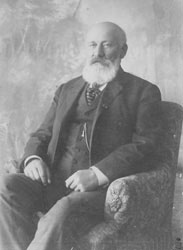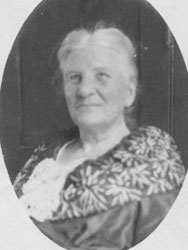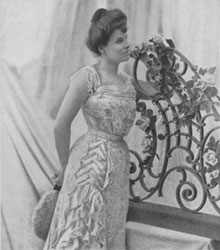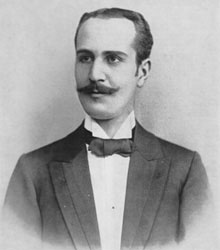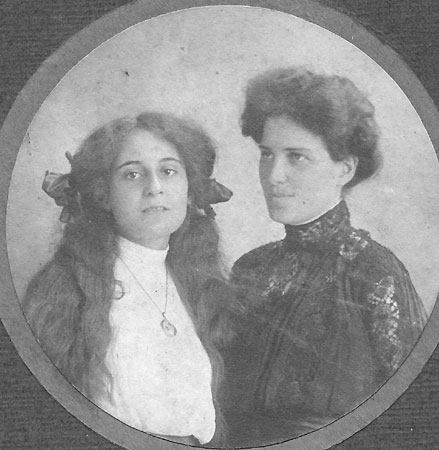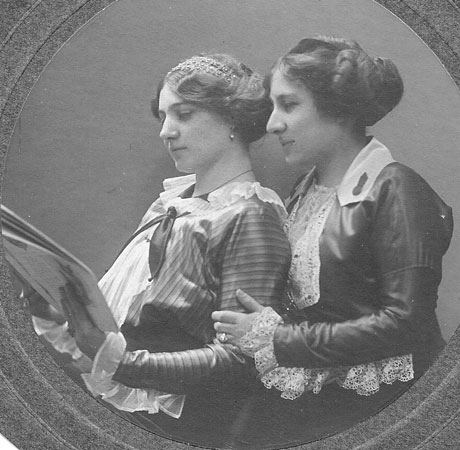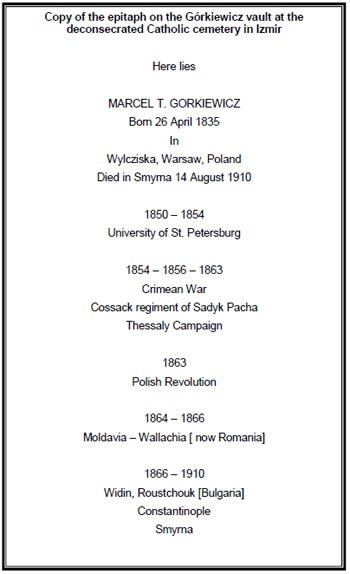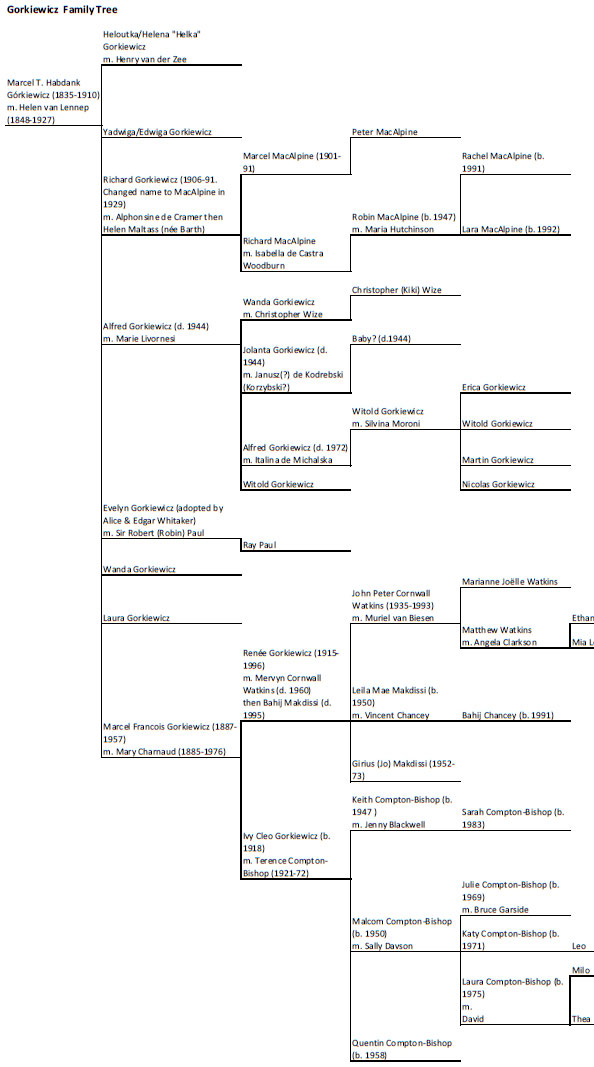A significant number of Poles settled in the Ottoman Empire in the 19th century. One of those was my great-grandfather, Count Marcel T. Habdank de Górkiewicz.
What brought him and his compatriots to Turkey had much to do with the occupation and dismemberment of Poland by neighbouring empires. In the latter part of the 18th century, the Kingdom of Poland was divided between Russia, Austria and Prussia. When Napoleon conquered central Europe, he restored Poland as a Duchy of Warsaw, which included the territories previously annexed by Austria and Prussia. Once Napoleon was defeated in 1815, Russia took control of most of the Duchy of Warsaw, incorporating the eastern parts into Russia and creating a new Kingdom of Poland as a Russian dependency. There were several Polish attempts to regain independence, but these were heavily suppressed. The 19th century saw more than a million Poles emigrating from their homeland, many to the United States.
Family mythology has it that an ancestor of Marcel Górkiewicz had fought with the Austrians against the Ottomans either in 1529 or, more likely, in 1683 at the second siege of Vienna, when the city was saved in large part thanks to the intervention of Polish heavy cavalry, the Winged Hussars, led by King Jan Sobieski. It is recounted that, when the Austrian emperor was thanking Górkiewicz for his contribution, he offered him anything from his treasury. Górkiewicz is supposed to have said “Ich habe dank” (i.e thanks, but no need), and thereafter was given the honorific “Habdank”.
Polish heraldic sources suggest an entirely different story, one dating back to 1109. The Polish king at that time had delegated Count Jan z Gory (John of the Mountain) to negotiate a peace treaty with the Holy Roman Emperor Henry V. The Emperor insisted that peace would only come if the Poles paid tribute. In order to display his might, Henry V showed Jan z Gory his considerable treasury, commenting that the wealth could be used to conquer Poland. Unimpressed by all the gold, the Count removed his own signet ring and threw it on to the treasure, with the words “Aurum auro addimus” (gold to gold we add), implying that the Poles could not be intimidated. Taken aback and to save face, the Emperor is said to have muttered “Hab dank”. Since that time, the Count and his descendants were known as being of the “Skarbek” clan and their coat of arms as “Abdank”.
Marcel T. Górkiewicz had an adventurous youth, which eventually led him to Turkey. He fought against the Russians in the Polish uprisings, was sentenced to death three times and escaped in dramatic fashion each time. During the Crimean War, he fought for the Ottomans in a Cossack regiment formed by another anti-Russian activist, Michal Czajkowski (Tchaikovsky), who converted to Islam, was a minister in the Ottoman court and known as Sadık Pasha. Czajkowski founded a Polish village, Adampol-Polonezköy, which still exists near Istanbul today.
After the Crimean War, Górkiewicz returned to Poland in 1863 to take part in the unsuccessful revolution against the Russian administration. Escaping from the consequences of defeat, he worked his way through various countries, finally settling in Turkey.
He married Helen van Lennep who came from a Dutch trading family long established in the region. With a degree in engineering from the University of St. Petersburg, he was able to turn his hand to a variety of opportunities. In the Dardanelles, he became the buyer for the farming business of the Calvert family, who were his wife’s uncles (by marriage to her maternal aunts who were of the Abbott family). Frank Calvert was the British Consul and archaeologist who, with Heinrich Schliemann, discovered Troy. The Calverts owned the eastern half of the site at Thimbra; the Turkish government the western side. There, Górkiewicz got to know Schliemann and took part in his excavations.
Górkiewicz finally moved with his growing family to Aziziye (Çamlık) near Smyrna, where he became manager of the Abbott family’s emery mines.
Marcel and Helen (“Helenco”) had eight children. The eldest, Heloutka (“Helka”) married Henry van der Zee, of a Dutch shipping family - an example of an archive cruise brochure where they are the agents. One of their daughters, Helena, left memoirs of her family’s ancestry and time in Smyrna, to which this submission is indebted. Their youngest son, Marcel François Habdank de Górkiewicz, was my grandfather.
Another of their daughters, Evelyn, lived in Constantinople and was adopted by a great aunt Alice (née Abbott) Whitaker and her husband Edgar, who had no natural children. During the 1914-18 war, Evelyn Whitaker devoted herself to caring for British prisoners of war, helping several to escape. One of them was Sir Robin (Robert) Paul who returned to Constantinople after the war to ask for her hand in marriage. Another was Francis Yeats-Brown, author of “The Bengal Lancer”, who paid tribute to her in his book about his experiences, “Caught by the Turks”.
Their eldest son, Richard, changed his name to MacAlpine, the English equivalent of Górkiewicz, in 1929. Another, Alfred, returned to Warsaw where he was killed during WWII, along with one of his daughters and grandchildren.
Their other three daughters, Yadwiga (Edwiga), Wanda and Laura never married and settled in Nice.
Marcel T. Górkiewicz died in 1910. His widow, Helenco, escaped Smyrna in 1922 with the family of her daughter, Heloutka, on a van der Zee ship. The van der Zee’s settled in Paris, where my great grandmother died.
My grandfather, Marcel François, married Mary Charnaud in Smyrna, but left for good in 1914 with the onset of war. They settled in Beirut where my aunt Renée and my mother, Ivy, were born.
No members of the Górkiewicz family remain in Turkey. There are some Górkiewicz descendants in Argentina and MacAlpines in Switzerland. What connections our family still has to Smyrna are mainly through the Charnauds.
 submission date 2010
submission date 2010
What brought him and his compatriots to Turkey had much to do with the occupation and dismemberment of Poland by neighbouring empires. In the latter part of the 18th century, the Kingdom of Poland was divided between Russia, Austria and Prussia. When Napoleon conquered central Europe, he restored Poland as a Duchy of Warsaw, which included the territories previously annexed by Austria and Prussia. Once Napoleon was defeated in 1815, Russia took control of most of the Duchy of Warsaw, incorporating the eastern parts into Russia and creating a new Kingdom of Poland as a Russian dependency. There were several Polish attempts to regain independence, but these were heavily suppressed. The 19th century saw more than a million Poles emigrating from their homeland, many to the United States.
Family mythology has it that an ancestor of Marcel Górkiewicz had fought with the Austrians against the Ottomans either in 1529 or, more likely, in 1683 at the second siege of Vienna, when the city was saved in large part thanks to the intervention of Polish heavy cavalry, the Winged Hussars, led by King Jan Sobieski. It is recounted that, when the Austrian emperor was thanking Górkiewicz for his contribution, he offered him anything from his treasury. Górkiewicz is supposed to have said “Ich habe dank” (i.e thanks, but no need), and thereafter was given the honorific “Habdank”.
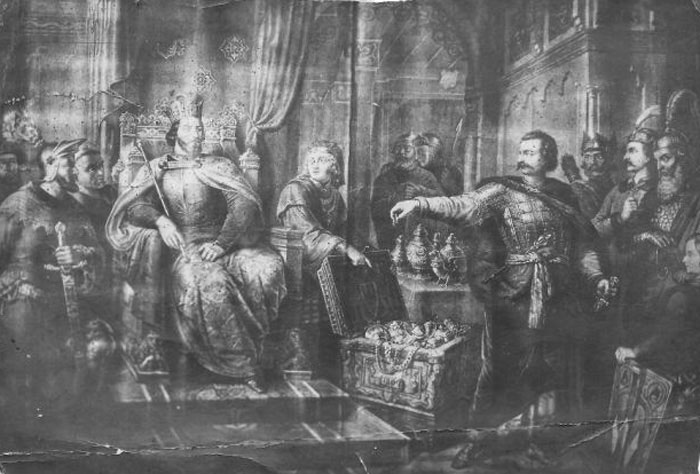 |
Count Jan z Gory in the presence of the Holy Roman Emperor Henry V.
Polish heraldic sources suggest an entirely different story, one dating back to 1109. The Polish king at that time had delegated Count Jan z Gory (John of the Mountain) to negotiate a peace treaty with the Holy Roman Emperor Henry V. The Emperor insisted that peace would only come if the Poles paid tribute. In order to display his might, Henry V showed Jan z Gory his considerable treasury, commenting that the wealth could be used to conquer Poland. Unimpressed by all the gold, the Count removed his own signet ring and threw it on to the treasure, with the words “Aurum auro addimus” (gold to gold we add), implying that the Poles could not be intimidated. Taken aback and to save face, the Emperor is said to have muttered “Hab dank”. Since that time, the Count and his descendants were known as being of the “Skarbek” clan and their coat of arms as “Abdank”.
Marcel T. Habdank de Gorkiewicz |
Helen (van Lennep) de Gorkiewicz |
Heloutka van der Zee as a young woman. |
Henry van der Zee as a young man. |
Marcel T. Górkiewicz had an adventurous youth, which eventually led him to Turkey. He fought against the Russians in the Polish uprisings, was sentenced to death three times and escaped in dramatic fashion each time. During the Crimean War, he fought for the Ottomans in a Cossack regiment formed by another anti-Russian activist, Michal Czajkowski (Tchaikovsky), who converted to Islam, was a minister in the Ottoman court and known as Sadık Pasha. Czajkowski founded a Polish village, Adampol-Polonezköy, which still exists near Istanbul today.
After the Crimean War, Górkiewicz returned to Poland in 1863 to take part in the unsuccessful revolution against the Russian administration. Escaping from the consequences of defeat, he worked his way through various countries, finally settling in Turkey.
He married Helen van Lennep who came from a Dutch trading family long established in the region. With a degree in engineering from the University of St. Petersburg, he was able to turn his hand to a variety of opportunities. In the Dardanelles, he became the buyer for the farming business of the Calvert family, who were his wife’s uncles (by marriage to her maternal aunts who were of the Abbott family). Frank Calvert was the British Consul and archaeologist who, with Heinrich Schliemann, discovered Troy. The Calverts owned the eastern half of the site at Thimbra; the Turkish government the western side. There, Górkiewicz got to know Schliemann and took part in his excavations.
Górkiewicz finally moved with his growing family to Aziziye (Çamlık) near Smyrna, where he became manager of the Abbott family’s emery mines.
Marcel and Helen (“Helenco”) had eight children. The eldest, Heloutka (“Helka”) married Henry van der Zee, of a Dutch shipping family - an example of an archive cruise brochure where they are the agents. One of their daughters, Helena, left memoirs of her family’s ancestry and time in Smyrna, to which this submission is indebted. Their youngest son, Marcel François Habdank de Górkiewicz, was my grandfather.
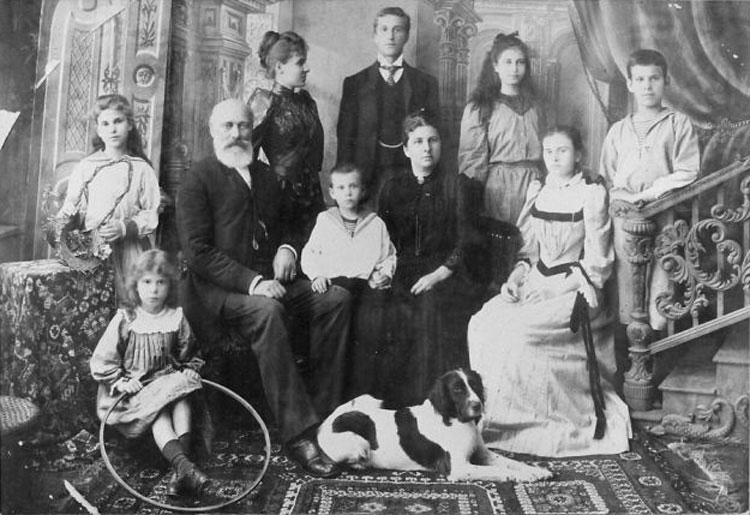 |
The Gorkiewicz family, left to right: Wanda, Laura, Marcel T., Heloutka, Marcel F., Richard, Helen van Lennep, Evelyn, Yadwiga, Alfred.
Another of their daughters, Evelyn, lived in Constantinople and was adopted by a great aunt Alice (née Abbott) Whitaker and her husband Edgar, who had no natural children. During the 1914-18 war, Evelyn Whitaker devoted herself to caring for British prisoners of war, helping several to escape. One of them was Sir Robin (Robert) Paul who returned to Constantinople after the war to ask for her hand in marriage. Another was Francis Yeats-Brown, author of “The Bengal Lancer”, who paid tribute to her in his book about his experiences, “Caught by the Turks”.
Their eldest son, Richard, changed his name to MacAlpine, the English equivalent of Górkiewicz, in 1929. Another, Alfred, returned to Warsaw where he was killed during WWII, along with one of his daughters and grandchildren.
Their other three daughters, Yadwiga (Edwiga), Wanda and Laura never married and settled in Nice.
Marcel T. Górkiewicz died in 1910. His widow, Helenco, escaped Smyrna in 1922 with the family of her daughter, Heloutka, on a van der Zee ship. The van der Zee’s settled in Paris, where my great grandmother died.
My grandfather, Marcel François, married Mary Charnaud in Smyrna, but left for good in 1914 with the onset of war. They settled in Beirut where my aunt Renée and my mother, Ivy, were born.
No members of the Górkiewicz family remain in Turkey. There are some Górkiewicz descendants in Argentina and MacAlpines in Switzerland. What connections our family still has to Smyrna are mainly through the Charnauds.
Helena van der Zee & Wanda de Gorkiewicz |
Ivy and Mary Charnaud |
|
|

